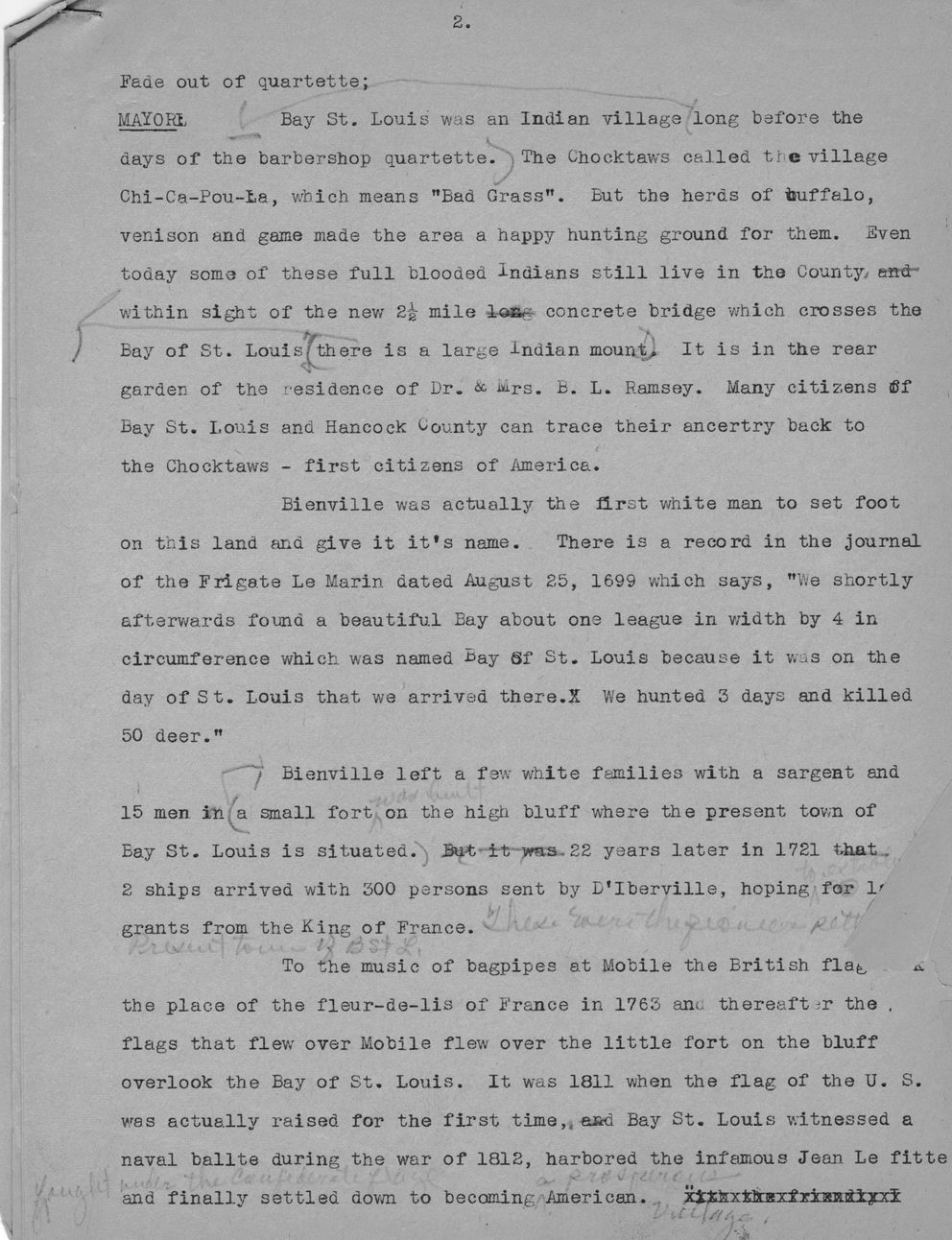This text was obtained via automated optical character recognition.
It has not been edited and may therefore contain several errors.
2. Fade out of quartette; MAYOR! Bay St. Louis was an Indian village long before the days of the barbershop quartette. ; The Chocktaws called the village Chi-Ca-Pou-ia, which means "Bad Grass”. But the herds of Buffalo, venison and game made the area a happy hunting ground for them. Even today some of these full blooded Indians still live in the County, artOr within sight of the new £% mile concrete bridge which crosses the Bay of St. Louis^there is a large Indian mounts It is in the rear garden of the residence of Dr. & Mrs. B. L. Ramsey. Many citizens dJf Bay St. Louis and Hancock bounty can trace their ancertry back to the Chocktaws - first citizens of America. Bienville was actually the first white man to set foot on this land and give it it's name. There is a record in the journal of the Frigate Le Marin dated August 25, 1699 which says, "We shortly afterwards found a beautiful Bay about one league in width by 4 in circumference which was named Bay Sf St. Louis because it was on the day of St. Louis that we arrived there.X We hunted 3 days and killed 50 deer." • Bienville left a few white families with a sargeat and 15 men in. a small fort on the high bluff where the present town of Bay St. Louis is situated. was-22 years later in 1721 that.. 2 ships arrived with 500 persons sent by L’Iberville, hoping for If grants from the K-ing of France. \ To the music of bagpipes at Mobile the British fla^ ^ the place of the fleur-de-lis of France in 1763 ani, thereafter the , flags that flew over Mobile flew over the little fort on the bluff overlook the Bay of St. Louis. It was 1811 when the flag of the U. S. wes actually raised for the first time,,&»d Bay St. Louis witnessed a naval ballte during the war of 1812, harbored the infamous Jean Le fitte and finally settled down to becoming American. .

BSL Centennial 1958 一Document (113)